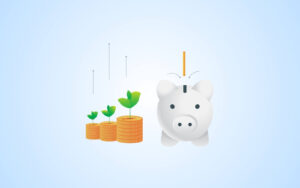by Colm O’Regan, Scientific Communications Ltd.
Marketers know how to follow their instincts, – it’s part of the job, after all – but there are formulas and methods you can follow, especially when it comes to connecting with your intended audiences. Colm O’Regan specializes in technical copywriting for scientific companies, and outlines his tips for C&EN Marketing Elements in this two-part series. Continue reading Part One below!
How do you motivate a scientific buyer to take the next step in the sales cycle? Not a bad question to ask yourself if you’re responsible for marketing scientific products and services. And if you’re not thinking about this, your competition probably is.
It all starts with a great recipe: A motivational recipe that grabs your prospect’s attention and entices them to keep reading so they take the next step.
In direct marketing or direct response copywriting, this is often called the motivating sequence. Below are the steps to get you started.
Step 1: Learn the motivating sequence!
The motivating sequence is like a recipe in itself, because it follows the same basic outline and can be applied to most of the communications you’ll write.
Motivate your scientific buyers to take the next step by following the outline below:
• Gain attention
• Highlight the problem or need
• Position your solution
• Prove what you’re saying is true
• Ask your reader to take the next step (call-to-action).
For example, you have a headline on your website’s homepage offering to help scientific buyers understand the solution to a specific problem, like decreasing method development time in biologics bioanalysis.
• The headline gains the attention of your prospects. After clicking on the headline, the prospect is taken to a landing page.
• The landing page is summarizing the problem for the readers, and the difficulties it imposes.
• A white paper is offered, explaining how a particular technology solves the problem. This is positioning a solution.
• The skepticism of the reader is overcome when they read the testimonials given by your previous customers. This is the proof.
• The end of the landing page asks the reader to fill out a form and download the white paper. This is the call-to-action that will take them to the next or final phase of your campaign goal.
Step 2: Write “benefit headlines”
Let’s get this out of the way now: You need to spend most of your time on the headline. 80% of your time, to be exact.
It’s been said if your headline doesn’t entice your prospects to read the rest of the copy, you’ve just wasted 80% of your marketing dollars. So you need to write good headlines! And the fastest way to write a great headline is to include a benefit.
For the buyer, this might be to save time, improve productivity, save money, get things done faster, comply with regulations more easily, improve sales, get the edge on the competition, or a combination of any of these things.
Benefit headlines work. Period.
The reason they work so well is they follow a proven and time-tested formula. An example of a benefit headline for a white paper would be:
Increasing Solar Cell Conversion Efficiency using Silicon Thin Film Technology: A Resource Guide for Solar Quality Control Managers
Step 3: Highlight the problem
Step 3 often blends with step 2. What I mean here is a well-written lead (the opening sentence or paragraph of your copy), like a great headline, will also gain the attention of your readers.
And like the headline, you need to spend a lot of time writing the lead. One of the best ways to write a great lead is to focus on the main problem that your solution helps to solve.
Of course, there are other ways to write a compelling lead that holds the interest of scientific buyers. For example, you could:
• Tell an interesting story
• Ask a provocative question
• Feature a key feature or benefit
• State an interesting fact or quotation
• Quote a satisfied customer
But my advice is to focus on the problem as your lead. This is the easiest way to do it, and will get your reader nodding along and interested in learning more.
If you decide to open your copy with one of the other techniques, make sure you still highlight the problem after the opening paragraph.
In my next blog post on this topic, we’ll talk about the final three steps in motivating scientific buyers. Every step is critical to having a motivating recipe that works in any form of marketing communication, be it a white paper, banner ad, email or sales letter. Click here to continue on to Part 2!
Colm O’Regan is the owner of Scientific Communications Ltd. He has spent 10 years working in science labs and nanotechnology research. Now a technical copywriter and marketing communications writer, he helps scientific companies write marketing materials that generate qualified leads and motivate scientific buyers.


















